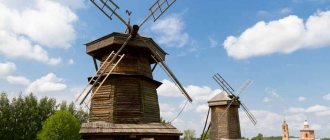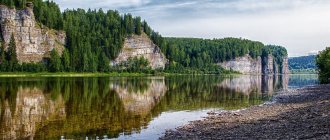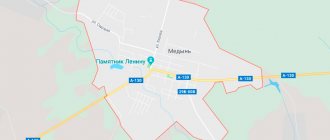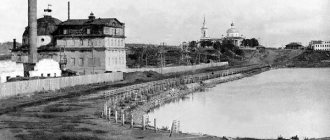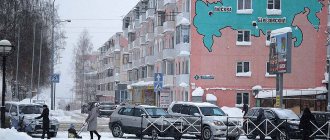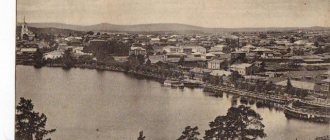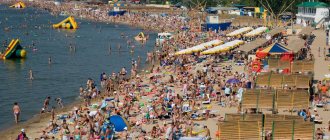Rybinsk is a beautiful ancient city on the Volga, with glorious traditions and rich history. Despite its huge industrial potential, Rybinsk has all the opportunities for tourism development. The city is located 84 km northwest of Yaroslavl along the P151 highway. In close proximity to the city there is the Rybinsk Reservoir, formed in the 1930s and it was the largest artificial reservoir in the world for its time.
Rybinsk history of the city.
Settlement on the territory of the city has been known since 1071. At first it was called Ust-Sheksna. In 1504 it was already mentioned as Rybnaya Sloboda in the spiritual charter of Ivan III; at that time and later it belonged directly to the Moscow kings and provided the royal court with fish. The settlement was made of wood, and no monuments from this era have survived in the city. In 1777, Rybnaya Sloboda, having become the center of the district of the Yaroslavl province, received the status of a city and the name Rybinsk. On August 3, 1777, Empress Catherine II granted the coat of arms and city status.
Where to stay overnight, cafes, restaurants
In the city you can spend the night in a hotel or inn for a reasonable price. Price from 1500 rubles per day. There are quite a lot of suitable options. This could be the city center or a residential area. There are many comfortable rooms in the historical area. There will be no difficulties with where to eat. Cozy cafes, restaurants, canteens are located everywhere. Mostly dishes of European and Russian cuisine are presented. The menu is rich in fish dishes for every taste.
Rybinsk history of the city.
After the transfer of the Russian capital, Rybinsk found itself in a very advantageous geographical position - at the crossroads of routes from St. Petersburg to the Caspian Sea and from Siberia (via the Kama) to the Baltic Sea, which was the main reason for the rapid growth of the city in the 18th-19th centuries. The deep-sea route from the lower reaches of the Volga ended here. Above the city, in the town of Perebory, the Volga became so shallow that people could ford it. Therefore, in Rybinsk there was a transshipment of goods and grain cargoes that came from the lower reaches of the Volga onto small ships that could move along the Mariinsky and Tikhvin water systems connecting the Volga with the Baltic.
III. Labor resources and employment
Population of working age /% of the total population Persons/% 98,821/53.5 Number of employees (without external part-time workers), of which - in large and medium-sized enterprises and organizations Persons 51,813 - in small enterprises (including micro-enterprises) Persons. 9,500—individual entrepreneurs Persons 3,398 Number of employees in large and medium-sized enterprises and organizations by type of economic activity, of which: People 51,813 • in manufacturing—20,598 • in the provision of electricity, gas and steam; air conditioning—2,208• in water supply, sanitation, waste collection—837• in transportation and storage—2,693• in wholesale and retail trade—1,917• in education—5,921• in healthcare and the provision of social services—5,675• in culture, sports, organization of leisure and entertainment—1,006 Number of officially registered unemployed Persons 2,313 Share of unemployed in the working-age population% 2.4Rybinsk history of the city.
In 1863, a railway was built along Sheksna, and from 1870 along the Rybinsk-Bologoye railway, after which transshipment was carried out into trains. A large warehouse industry arose in the city, including one of the first oil warehouses of the Nobel brothers. The transshipment of cargo in the summer attracted a huge number of barge haulers and hookmen to the city, who lived right on the shore and many times outnumbered the number of permanent residents. Industry is also developing in the city.
How to get there?
regularly conducts trips to the cities of the Golden Ring of Russia.
Travel from Kazan
Travel from Cheboksary
Travel from Yoshkar-Ola
You can get to the village in a variety of ways. For those who need a quick way, air services are suitable. The trip will last only one hour. The plane departs from Moscow from Domodedovo Airport. Convenient to travel by train. The duration of your journey will be 8-9 hours. There is a direct train, so there is no need to change trains.
You can also use the train service. It departs from Yaroslavl. Travel time will last no more than 4 hours. In addition, scheduled buses and minibuses run to Rybinsk. The journey will take 7 hours.
Rybinsk history of the city.
In 1907, the Nobel brothers built a shipyard that still exists today in the suburban village of Slip. During the First World War, enterprises were evacuated to the city, giving rise to the currently operating factories. In 1916, the construction of an automobile plant began, on the basis of which an engine plant later grew. A new stage in the development of Rybinsk began with the industrialization of the country. Since the beginning of the 30s of the 20th century, the city has been growing rapidly, turning from commercial to industrial. The largest engine-building plant in the city was created at the base, producing mainly aircraft engines.
Famous people
Famous people of Rybinsk who glorified it in past times - representatives of the merchant class, industrialists and philanthropists Durdins , directors of Rybinsk enterprises - V.P. Balandin, A.A. Gerasimov , P.F. Derunov , military generals Kharitonov and Batov .
Among contemporaries, the personalities of Rybinsk residents are noteworthy - actor and director Evgeny Serov, and Stanislav Rostotsky , actors Mikhail Troynik and Anastasia Akatova, singers Alexa Aster, T1one and the Balagan Limited group. The founders of this musical group are friends from Rybinsk - folklorists, collectors of Yaroslavl ditties.
A unique personality of Rybinsk is the creator of the local museum “Rybinsk Fishes” Alexey Aleksashin. This researcher of the region's folk crafts knows the history of his family up to the fifth generation. He eagerly asked his parents about his ancestors, and now continues to explore his “roots” through studying the history of the region.
And he believes that knowledge of the traditions and customs of his people is the path to their development and prosperity. He constantly gives examples of residents of other countries who try to preserve family heirlooms and study their ancestry. He says that a person who knows his roots stands confidently on his feet.
Thanks to the interest of this person, the museum is replenished with new exhibitions telling about the history of the flooded Mologa and the original ornaments characteristic of the Yaroslavl region. His painted wooden fish are unique masterpieces worthy of extensive study.
Rybinsk history of the city.
In 1936, as part of the “Big Volga” project, construction of the Rybinsk hydroelectric power station and hydroelectric complex began. The project had several goals: to provide a deep-sea route from the Volga to the Baltic and to the Moscow River, as well as to provide the growing industrial center with electricity. In Perebory, in the place where the Volga was especially shallow, a two-line lock and spillway dam of the Rybinsk reservoir was built. The Rybinsk Reservoir is unusually wide and shallow, it has flooded large areas of land in the floodplains of the Sheksna and Mologa rivers, for which the project has been criticized. In 1946, the city was renamed Shcherbakov, but already in 1957 its historical name Rybinsk was returned to it. However, in 1984 the city was renamed again - this time to Andropov, and in 1989 the name Rybinsk was returned again.
Geography
The city is located 270 km north of Moscow and 80 km northwest of Yaroslavl. In addition to the three main rivers, a number of small rivers and streams flow through the city. The historical center of the city is limited by the Volga rivers, its right tributary Cheryomukha, the left tributary of Cheryomukha Korovka and the left tributary of Korovka Dresvyanka or Pakhomovsky stream. The area on the right bank of the Cheryomukha in the city is called “Behind the Cheryomukha,” and the outskirts along the right bank of the Pakhomovsky stream is called “Behind the Pakhomovsky Bridge.” The small river Utkash, a right tributary of the Volga, flowing below Cheryomukha, separates the southern part of the city - Kopayevo. Another right tributary, the Fominsky Stream, flows along the northwestern outskirts and separates the Perebory microdistrict from the city. The Krutets stream and the Selyanka river flow in the left bank part of the city, separating its southern outskirts - Slip - from the Trans-Volga part of the city. Inopash, a tributary of the Sheksna, borders the Trans-Volga part from the north.
The city is located at the northernmost point of the Volga River; before Rybinsk it flows mainly to the northeast, and from Rybinsk it turns to the southeast. Rybinsk lies on both its banks, but the main part is on the right bank, oriented along it and has a length of twenty-seven kilometers with a width of no more than six kilometers.
The city is located in a flat, often marshy area. The conventional border of the zone of mixed forests and taiga passes through it.
Within the city limits there is a dam at the Rybinsk Hydroelectric Power Station, which forms the Rybinsk Reservoir. The peculiarity of this dam is that it blocks the confluence of the Sheksna River and the Volga River; Having merged, the rivers formed a wide but shallow reservoir. Between the old bed of the Sheksna, the reservoir and the Volga, a rather long island was formed, clearly visible on the map above.
Attractions. Spaso - Transfiguration Cathedral.
At the beginning of the 17th century. on the site of the current cathedral stood wooden churches, Preobrazhenskaya and Peter and Paul. The new cathedral was built in 1838-1851. at the expense of Rybinsk merchants. In 1846, the temple was painted by an artel of Palekh craftsmen. In addition to the wall paintings, the same team painted 40 icons for the iconostasis. The cathedral was consecrated on June 26, 1851. In 1891, a guardianship for the poor was founded at the cathedral, and a parochial school was founded in 1892. The cathedral was closed in 1929. In 1930, the drums of the domes were destroyed. In 1971 the chapters were restored. In 1996, the bell tower was transferred to the use of the Church, and in 1999, the temple was completely transferred to the use of the Russian Orthodox Church. The bell tower is about 116 meters high and is one of the tallest in Russia - the second tallest in Russia after the bell tower of the Peter and Paul Cathedral.
Old grain exchange.
One of the buildings that greets tourists on the banks of the Volga in Rybinsk is the old “pilot” exchange. Strict proportions make this building one of the best monuments of provincial classicism. Previously, merchants from all over Rybinsk traded bread here and made profitable deals. The author of the grain exchange is the architect Gerasim Varfolomeevich Petrov. The opening took place in 1811 - July 18. In 1830-1831, after the premises were renovated, the district and zemstvo courts moved into the stock exchange. In 1841, while passing through Rybinsk, Nicholas I gave the order to reopen the stock exchange and give it proper structure.
In 1860, M. N. Zhuravlev became the chairman of the exchange, after which the exchange began to be used for trading bread and in subsequent years became the largest in Russia. The building existed as a stock exchange until October 2, 1912. During Soviet times, the building was occupied by various educational institutions. In the post-war years, a river station and water police were located. Recently, the building of the old exchange has been on the balance sheet of the Rybinsk State Historical, Architectural and Art Museum-Reserve. Soon it is planned to open an exhibition on the history of Volga shipping and the Rybinsk pier.
V. Business entities
By type of economic activity
Unit 3 829• manufacturing industries565• provision of electricity, gas and steam; air conditioning21• water supply, sewerage, waste collection and disposal24• construction486• wholesale and retail trade; repair of motor vehicles985• transportation and storage168• hotels and catering establishments96• activities in the field of information and communications120• financial and insurance activities19• activities in real estate transactions328• professional, scientific and technical activities276• education139• activities in the field of health care and social services77• activities in the field of culture, sports, leisure activities93• others432by organizational and legal forms
Unit 3 829• unitary enterprises12• business societies and partnerships3 174• of which joint stock companies76• production cooperatives5• consumer cooperatives97• foundations9• institutions221• public and religious organizations125• others110by number of employees
Unit 3 829 3.1. large and medium-sized enterprises and organizations230 - incl. large and medium-sized industrial enterprises42• with more than 1 thousand people.5• with more than 250 people. up to 1 thousand people 103.2. small enterprises262 3.3. microenterprises2 970by type of ownership
Unit 3,829• state70• municipal174• private3,394• public and religious organizations135• other56The volume of goods shipped, work performed, services for a full range of enterprises and organizations, incl.
Billion rubles 115.7-Growth rate compared to the corresponding period last year in current prices%97Large and medium enterprisesBillion rubles 101.4-Growth rate compared to the corresponding period last year in current prices%99.5• Industry—own goods shipped production Billion rubles 87.9 - growth rate compared to the corresponding period of last year in current prices% 99.9 • manufacturing - shipped goods of own production Billion rubles 78.7 - growth rate compared to the corresponding period last year in current prices% 97, 0• supply of electricity, gas, steam; air conditioning - goods shipped from our own production Billion rubles 8.1 - growth rate compared to the corresponding period last year in current prices% 139.9 • water supply, sanitation, collection and disposal of waste - goods shipped from our own production Billion rubles 1.0 - growth rate compared to the corresponding period last year in current prices%98.0 Small enterprises, including microenterprises Billion rubles 14.3-Growth rate compared to the corresponding period last year in current prices%82.5The building of the new exchange.
The building of the new exchange was built in 1912 in the “neo-Russian” style, using stylized features of ancient Russian architecture, according to the design of the architect Alexander Vasilyevich Ivanov. The exchange building, together with the cathedral, built in the traditions of Russian classicism, and the bridge spanning the Volga form a single ensemble, which is the “calling card of the city.” Today the building houses the Rybinsk State Historical, Architectural and Art Museum-Reserve. In 1992, the city administration decided to transfer the building of the new grain exchange to the museum-reserve. The building was quickly converted into a museum, and on December 18, 1993, the grand opening of new exhibitions took place.
IV. Income of the population.
Average monthly nominal accrued wages (full range of enterprises and organizations) RUB. 35,847.7 Growth rate compared to the corresponding period of last year, including% 104.7 - large and medium-sized enterprises and organizations / in December RUB. 38,844/46,382 Growth rate compared to to the corresponding period of last year%104.7/101.9—small enterprises (including microenterprises)RUB 19,507Growth rate to the corresponding period of last year%95.8Average pension size/Number of pension recipients *RUR/Person 15,816/74,962 incl. insurance RUB/Person 16,064/71,782 social RUB/Person 9,569/2,894 The cost of living in the Yaroslavl region (Q4)—per capita, including RUB 10,668—for the working population 11,689—for pensioners 8,665—for children 10,675 Ratio of accrued wages (December) (large and medium-sized enterprises and organizations) and the cost of living (Q4) Times 4.35Red Square.
A monument to Alexander II was erected on Red Square in 1914. The majestic monument was built with donations from townspeople and residents of the Rybinsk district, to commemorate the 50th anniversary of the liberation of peasants from serfdom. But the sculpture was destroyed in 1918; according to legend, the monument to Alexander was thrown into the Volga. In its place, a monument to V.I. Lenin was erected, which has a number of features that make it unique, namely, the leader of the proletariat is depicted in winter clothes and a hat with earflaps.
The city of Rybinsk has potential in the field of tourism. In Demino, a suburb of the city, a stage of the World Cup in cross-country skiing is taking place. The city hosts Merchant Day, the Festival of Poetry and Songs in memory of Lev Oshanin, numerous exhibitions and fairs. The city actively welcomes bus groups, cruise ships, and walking sightseeing tours are conducted around Rybinsk. Of great value and interest is the historical center of the city with buildings from the 18th - early 20th centuries.



